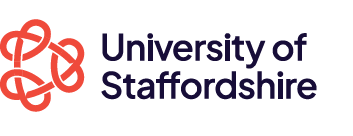Module Descriptors

PHYSICAL EDUCATION
ECON60133
Key Facts
Digital, Technology, Innovation and Business
Level 6
20 credits
Contact
Leader: Syed Zaidi
Email: Syed.Zaidi@staffs.ac.uk
Hours of Study
Scheduled Learning and Teaching Activities: 90
Independent Study Hours: 110
Total Learning Hours: 200
Assessment
- MID-TERM PRACTICAL EXAM - 1 HOUR weighted at 50%
- FINAL PRACTICAL EXAM - 1 HOUR weighted at 50%
Module Details
LEARNING OUTCOMES
Develop basic health care and physical fitness in people, form the habit of exercising regularly. Hereby cultivating the quality of industriousness and diligence, directing each person to a healthy lifestyle. Stemming from a positive lifestyle, being passionate about movement helps people be sensitive to problems and solve the best work.
Knowledge & Understanding, Communication, Problem Solving, Reflection
Encourage sports activities to boost students' physical strength, leading to balanced physical and mental development.
Application
Knowledge & Understanding, Communication, Problem Solving, Reflection
Encourage sports activities to boost students' physical strength, leading to balanced physical and mental development.
Application
ADDITIONAL ASSESSMENT DETAILS
Mid-term practical exam (50%) LOs 1,2
Final practical exam (50%) LOs 1,2
LEARNING STRATEGIES
The learning strategy for the module employs flexible and effective teaching methods, such as modelling, verbal explanations, practice, games, competitions, and demonstrations. These methods aim to help students easily visualize the subject and should be suited to their age and practice environment.
Support facilities and learning materials enhance students' access and understanding.
Additionally, combining theory with practice provides students with opportunities to apply and experience what they have learned.
Support facilities and learning materials enhance students' access and understanding.
Additionally, combining theory with practice provides students with opportunities to apply and experience what they have learned.
TEXTS
Ministry of Education and Training Vietnam: Circular 25/2015/TT-BGDÐT
Ha Ngoc Huy & Nguyen Phi Yen, Glob Acad J Humanit Soc Sci; Vol-4, Iss-5 (Sept-Oct, 2022): 169-173.
Ha Ngoc Huy & Nguyen Phi Yen, Glob Acad J Humanit Soc Sci; Vol-4, Iss-5 (Sept-Oct, 2022): 169-173.
RESOURCES
Module Study Guide and Handbook
BUV Learning Resources Centre and website
BUV Canvas; Learning Management System
BUV Learning Resources Centre and website
BUV Canvas; Learning Management System
INDICATIVE CONTENT
Physical education is a systematic, purposeful, and organized approach to teaching movement-related knowledge and skills. It integrates with other educational aspects to enhance moral, intellectual, physical, and aesthetic development, fostering balanced and comprehensive growth in individuals.
Physical education comprises two key aspects: movement instruction and knowledge education. Movement instruction includes exercises and aerobics, while knowledge education delves into understanding motor qualities of the human body. Both aspects are interrelated and continuously updated to meet societal needs.
Physical education comprises two key aspects: movement instruction and knowledge education. Movement instruction includes exercises and aerobics, while knowledge education delves into understanding motor qualities of the human body. Both aspects are interrelated and continuously updated to meet societal needs.